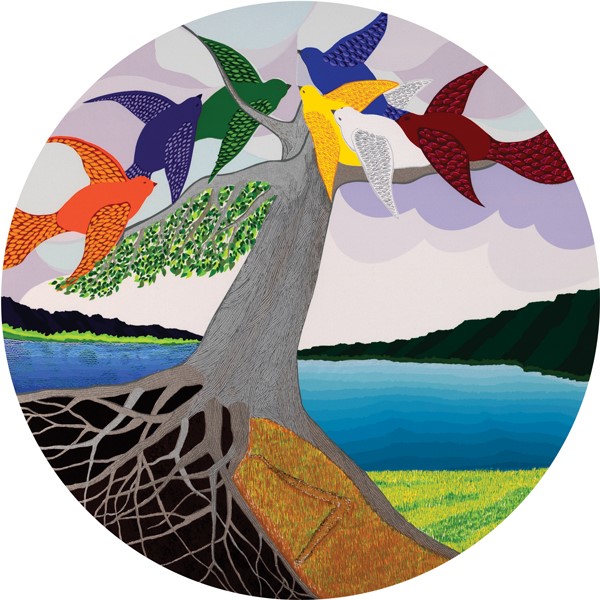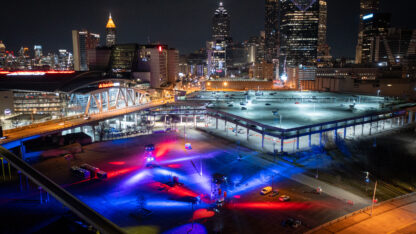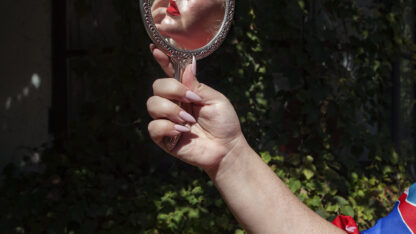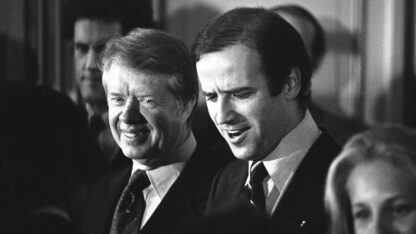Georgia Museum of Art exhibits works by renowned artist Lou Stovall

World-renowned printmaker and artist Lou Stovall has a new exhibition in his birthplace of Athens, Georgia. “Lou Stovall: Of Land and Origins” highlights the works inspired by his life, nature, and poetic meditations. The show is on view through May 29 at the Georgia Museum of Art on the campus of the University of Georgia. Shawnya Harris is the museum’s curator of African-American art. She joined “City Lights” host Lois Reitzes via Zoom to share a bit of history on the artist and how he expanded the world’s visual vocabulary of print.
The art of screen printing often brings advertisements and concert posters to mind, but less frequently, the high echelons of fine artistry. But the techniques of Lou Stovall’s screen printing broke the mold of the medium, with some imagery resembling watercolor or pastel paintings.
“When we think about posters and other media… you think of just a flat image with lettering, and maybe bright color to get your attention for the purposes of purchasing something, or attending or connecting with something on a very quick level. One of the things I find interesting about Lou Stovall’s technique is that he actually invites closer looking,” said Harris. “I love his lines. I mean, he has a very strong background in draftsmanship…. So his attention to the lines and composition, all those skills coming from his training, and then combining it with the medium of screen printing is pretty remarkable.”
Stovall developed his techniques while studying under the tutelage of major American artists at Howard University – David Driskell, James Wells, and Lois Mailou Jones. “While he was in school and also working at yet another silkscreen signage shop called Botkin’s Sign Shop in Silver Spring, Maryland, he also became involved with designing posters for area events related to art activism, concerts, festivals, and so forth,” recounted Harris. “Then he began to really refine his technique.”
As Stovall’s artistry drew attention, he took on collaborations spanning the American art world with artists like Alexander Calder and Jacob Lawrence. Wherever silkscreening was needed, Stovall would provide his unique vision to scores of reproducible, eye-catching images in an iconic visual style for 1960s America. “You couldn’t help but be a part of what was happening around you, and particularly in Washington, DC, [with] everything from protest marches to cultural events where people were redefining what it meant to be American in particular, I would argue that it was very easy for him to be a part of that larger community activism through his art,” said Harris.
The 1974 collection shares its name, “Of the Land,” with a recently released book of the multidisciplinary Stovall’s art and poetry, edited by his son, Will Stovall. Among other works, the Georgia Museum of Art exhibition carries pieces from Stovall’s 1974 series “Of the Land,” showing a naturalist side of the artist with silkscreen techniques thoughtfully applied to landscapes. “I call them tondo, or circular images of natural landscapes and nature – trees, rivers, birds that are fluttering above a landscape scene,” Harris said. “It’s almost like a stereoscope image of nature, where he’s able to take many of his memories from growing up in Springfield.”
“Lou Stovall: Of Land and Origins” is on view at the Georgia Museum of Art at UGA now through May 29. More information is available at https://georgiamuseum.org/exhibit/lou-stovall/.








